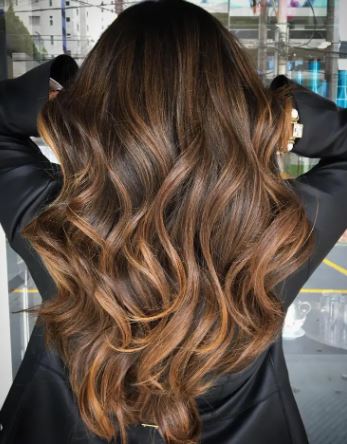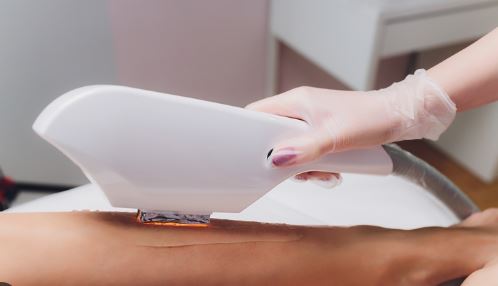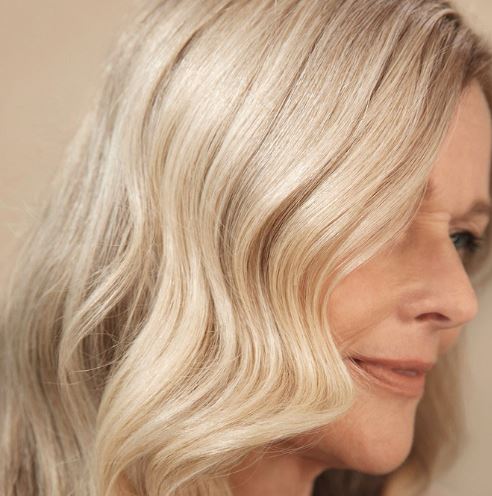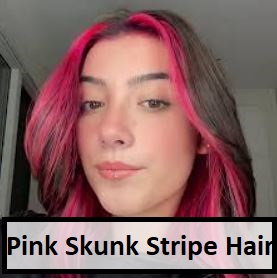Table of Contents
Balayage Hair Color – Are you ready to embrace the latest hair color trends that enhance your natural beauty effortlessly? You can’t go wrong with balayage.
This fascinating technique has taken over the beauty industry, providing a multidimensional and sun-kissed look that is low maintenance and versatile.
This article will explore the world of balayage. We’ll look at its origin, definition, application, and benefits. Balayage can be used to create a subtle change or a bold look.

Discover the secrets behind balayage and why it is a popular choice among individuals who want to elevate their look. Prepare to be inspired by balayage’s natural, radiant beauty.
What is Balayage?
The French word “balayage” means to sweep. It is a hair-coloring technique that produces a sun-kissed, natural look.
Contrary to traditional highlights, which use foils or caps on sections of hair, balayage uses hand-painted color.
This allows for a seamless and customized blend. This method is a low-maintenance and organic way to color hair.
Benefits Of Balayage
The benefits of Balayage have made it extremely popular.
- Natural color: The Balayage technique creates natural-looking highlights, which mimic how the sun lightens hair naturally. It adds depth and dimension without having to use harsh lines or uniformity.
- Low Maintenance: Balayage is low maintenance because it grows out naturally, which means you don’t need to touch it up as often. It is a great option for people who are looking for a low-maintenance hair color.
- Versatility Balayage can be customized to suit different hair textures, lengths, and styles. It is a versatile technique that allows for customization and creativity.
- Smooth transition: The Balayage technique creates a smooth transition between colored and natural hair sections, creating a blended, soft effect. The regrowth is less visible and you don’t need to touch up your roots as often.
How to Choose the Right Shade
It’s important to select the right shade for your hair and skin color.
- Consideration for skin tone: Warmer tones pair well with honey and caramel shades while cooler tones go for ashier or Platinum tones. Professional colorists can help you choose the best shade for your skin tone.
- Compatible hair color: The Balayage technique can be used on a variety of base colors. However, some shades will require pre-lightening. The lighter hair colors allow for more balayage possibilities.
- Personal Style: Take into account your own personal style, and the level of contrast you desire. Subtle balayage gives a natural appearance, while bold shades and contrasts make a statement.
Balayage application process
To achieve a beautiful result, the application process is crucial. Here are the steps:
- Preparation The hair will be washed, dried, and conditioned before the balayage. This will ensure a smooth canvas for color application.
- Sectioning: The hair has been divided into sections for the systematic application of color. This allows for an even color distribution and eliminates missed spots.
- Painting Technique: The colorist uses a freehand technique to paint the selected balayage shades on the desired hair sections. The strokes should be precise and deliberate. They should focus on the mid-lengths, ends, and tips for a sun-kissed look.
- Processing Time: Color is allowed to develop according to the desired outcome and the natural pigment of the hair. Processing time can vary based on desired lightness, hair condition and desired result.
Maintaining Balayage
Follow these maintenance tips to prolong the beauty and vibrancy of your balayage:
- Color Protection: Use color-protecting shampoos and conditioners to maintain your desired shade and prevent premature fading.
- Proper Washing: Avoid frequent washing of your hair, as it can strip away the natural oils and color. Choose sulfate free and color safe products to prolong the life of your balayage.
- Regular Touch-Ups: In general, Balayage requires less frequent touch-ups than traditional highlights. To keep your balayage fresh, you should schedule regular appointments with your colorist.
Traditional Highlights vs. Traditional Highlights
There are some differences between balayage highlights and traditional highlights.
- Differences in techniques: Balayage is a freehand technique, whereas traditional highlights use foils or caps for highlighting.
- Overall Effect: The Balayage technique creates a natural sun-kissed look with softer transitions. The traditional highlights are often more uniform and defined.
- Maintenance Balayage is less maintenance-intensive than traditional highlights because it grows more smoothly and does not leave a regrowth line.
Balayage for different hair types
The Balayage technique offers customization options that suit various hair types, such as straight, curly, and short hair.
- Straight Hair: Balayage gives straight hair dimension and movement, giving the illusion of depth and texture.
- Curly Hair: The Balayage technique enhances the natural texture and color of curly hair by bringing out its different shades.
- Short Hair: Balayage is a great way to add depth and dimension to short hair.
- Long Hair: Balayage creates an amazing cascading look, which shows off the beautiful color variations.
Avoid these Common Mistakes
Avoid these common mistakes to ensure that your balayage is a success:
- Do-it-yourself disasters: It is best to leave Balayage to the professionals. Attempting it at home could lead to uneven color distribution and unwanted results.
- Incorrect Application: Improper color sectioning or application can lead to an unnatural look. To achieve the desired result, trust a colorist with experience.
- Overprocessing Hair can be damaged by over-developing or leaving the color on too long. Following professional guidelines is essential for product selection and processing times.
Tips for Balayage Maintenance
Follow these tips to keep your balayage vibrant and fresh:
- Use color-protecting hair products: Buy high-quality shampoos and conditioners that are formulated specifically for color-treated locks. These products nourish and protect hair color.
- Schedule touch-ups with your colorist: Balayage is more natural than traditional highlights. By regularly scheduling touch-ups, you can ensure that you make any necessary adjustments or refreshments to keep your balayage looking fresh and vibrant.
- Minimizing Heat Damage: Overuse of heat can cause color fade and hair damage. Use heat protectors and air-drying techniques to minimize heat exposure.
Frequently Asked Questions – Balayage Hair Color
FAQ 1: How long does balayage typically last?
Balayage lasts anywhere between 8 and 12 weeks, depending on hair growth rate and individual preference.
FAQ 2: Is balayage suitable for all hair lengths?
You can customize balayage to suit any hair length, from short pixies to long flowing locks.
FAQ 3: Can I go from dark hair to balayage in one session?
It may take several visits to achieve the desired level of lightness.
FAQ 4: Will balayage damage my hair?
Balayage shouldn’t cause any damage when performed by an experienced colorist. It’s important to adhere to professional advice and follow a healthy hair-care routine.
FAQ 5: Can I style my balayage hair as usual?
Absolutely! You can style your hair however you like. The dimension and highlights that balayage creates can enhance many different hairstyles.




